The Essential Guide to Coding Qualitative Data
What is qualitative research? | Types of qualitative data | How to transcribe an interview | Introduction to qualitative coding | How do you code qualitative data | Steps for coding | Tools for coding | Start free trial
What is coding in qualitative research?
The process of coding qualitative data is an important part of the analytical process of analyzing qualitative research. When you generate data from qualitative methods such as semi-structured interviews, qualitative coding allows you to interpret, organize, and structure your observations and interpretations into meaningful theories. Coding in qualitative research allows you to be reflexive, critical, and rigorous with your findings. Continue reading to learn more about coding in research.
What is qualitative research?
Qualitative research is research that utilizes non-numerical from methods such as observations, in depth interviews, or focus groups, or by analyzing content such as documents, or records. Analysis deals with words, meaning, and interpretation.
Qualitative data collection methods
There are many methods of qualitative data collection methods, and each have their own unique advantages and disadvantages. You should select a qualitative methodology that is best suited for answering your research questions. There are more methodologies than what I’ve listed here, but here are some examples.
Semi-structured interviews
Semi-structured interviews are when the interviewer prepares a research discussion guide ahead of time to guide the conversation, but allows flexibility in the interview to go off-script. This allows for a balance between the structure of standardized questions, while allowing the interviewee to take the interview beyond the discussion guide. Learn more about semi-structured interviews.
In depth interviews
In depth interviews are when the interviewer prepares a discussion guide and interviews a series of participants one on one to explore behaviors, description, and motivations. Interview coding is a great way to analyze what you find in these interviews.
Focus groups
Focus groups are when you recruit a specific group of a target audience to participate in a group discussion led by a moderator. This is commonly used in market research for gathering feedback on product launches, marketing campaigns, service designs, or other concepts.
Observations
Observations are when a researcher goes on-site to a location to directly observe participants’ behavior. This happens in the natural environment of the participant group. Learn more about observational research.
Ethnographies
Ethnographic research is a qualitative research method involving the systematic study of people in their natural environment to understand their way of life, including how they see and interact with the world around them. Learn more about ethnography.
Diary studies
Diary study is a way to collect data about a particular group over a period of time, to understand their in-context behavior, experiences, and activities. Participants keep a diary log of what’s happening in their everyday lives.
Case studies
A case study is an in depth research approach to understand one particular person or group in their real life context. It’s often used to understand a complex, multi-faceted phenomenon.
Types of qualitative data
Qualitative data is non-numerical data that is produced from qualitative research methods. Any of these can be used in data coding.
Diary accounts
Documents
Case studies
Photographs
Audio recordings
Video recordings
Transcriptions
Descriptive traits
Descriptions
Observations
Qualitative analysis doesn't have to be overwhelming
Take Delve's free online course to learn how to find themes and patterns in your qualitative data. Get started here.
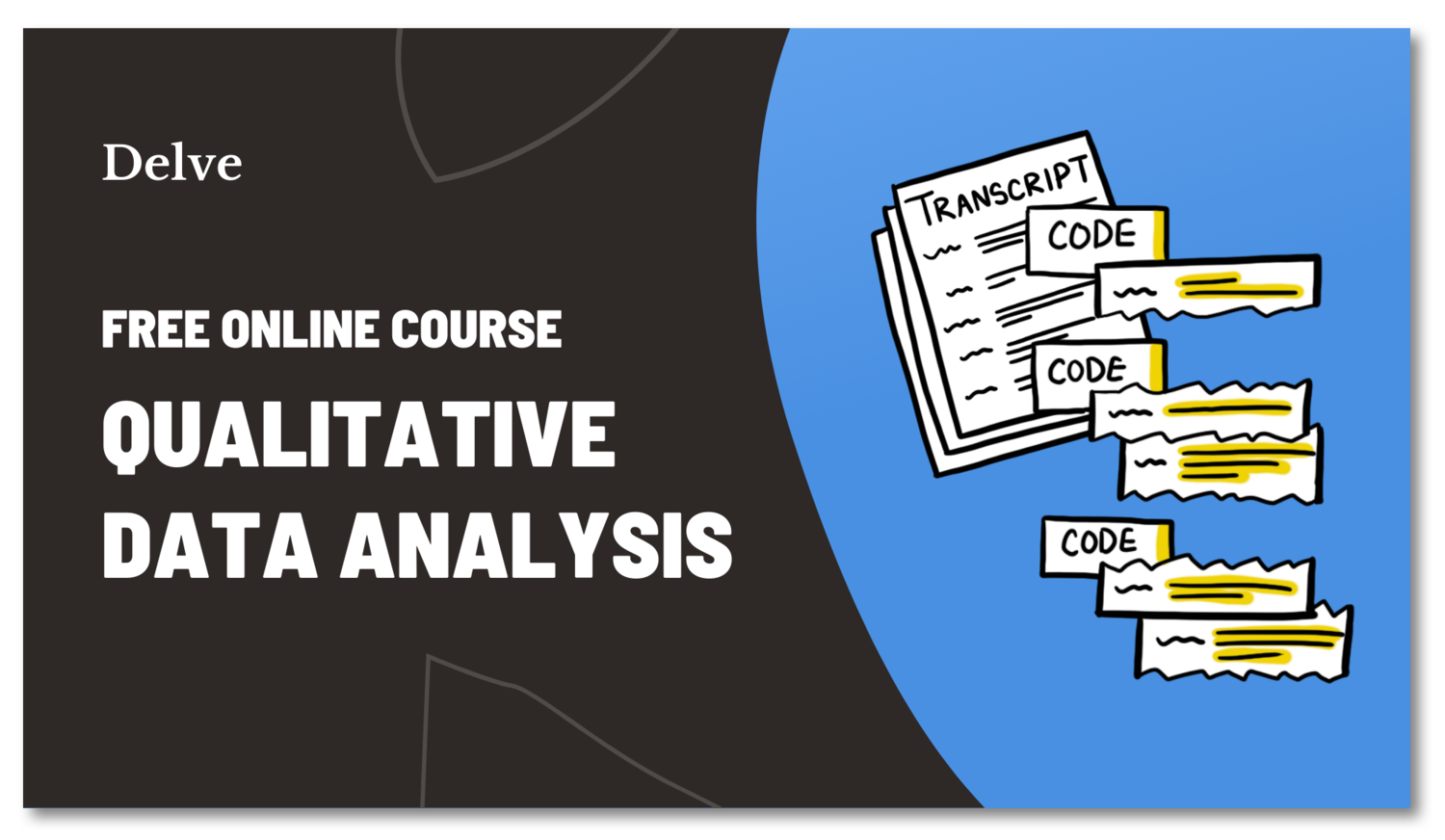
How to transcribe an interview
After conducting an interview, transcription will allow you to take the contents of the interview and effectively analyse it. Coding interviews requires a transcript. You can transcribe with varying levels of specificity, and utilize various methods from doing it manually, with auto-transcription software, or by outsourcing to transcription services.
When transcribing, choose the type of transcription you want to do, then listen to audio and type out the transcription while designating who the speaker is, a timestamp, and the dialogue contents of the transcription. These transcriptions are the first step for coding interviews.
Types of transcriptions
Verbatim transcription: Transcribing every word, pause, stutter, and filler words, such as “ahs” and “ums”.
Intelligent transcription: Transcribing every word, but making an interpretation to exclude pauses, status, and filler words and potentially cleaning up the grammar.
Edited transcription: An edited transcript is common if you plan to publish the transcript for an audience. It’s cleaned up and edited to increase readability and clarity. You can edit grammar, remove run-on sentences, and potentially summarize parts for the sake of clarity.
Introduction to Coding Qualitative Data
What is qualitative coding?
Qualitative coding is a process of systematically categorizing excerpts in your qualitative data in order to find themes and patterns.
It enables you to take unstructured or semi-structured data such as transcripts from in-depth interviews or focus groups and structure it into themes and patterns for analysis.
Coding your qualitative data makes your analysis more systematic and rigorous. It also provides transparency and reflexivity to both yourself and others.
It’ll enable you to find insights that are truly representative of your data and the human stories behind them.
Benefits of qualitative coding
Increase validity: Qualitative coding provides organization and structure to data so that you can examine it in a systematic way to increase the validity of your analysis.
Decrease bias: Qualitative coding enables you to be aware of potential biases in the way data is analyzed.
Accurately represent participants: Qualitative coding allows you to evaluate if your analysis represents your participant base, and helps you avoid over representing one person or group of people.
Enable transparency: Qualitative coding enables other researchers to methodically and systematically review your analysis.
How do you code qualitative data?
The process of coding qualitative data varies widely depending on the objective of your research. But in general, it involves a process of reading through your data, applying codes to excerpts, conducting various rounds of coding, grouping codes according to themes, and then making interpretations that lead to your ultimate research findings. You may start with an initial round of coding to summarize or describe excerpts, and then do a second round of coding that adds your own interpretive lens.
There’s no right or wrong way to code a set of data, just some approaches that are more or less appropriate depending on your research objective. Below are various types of coding, which you can mix and match according to what works for you.
Deductive and inductive approaches to qualitative coding
Before coding in qualitative research, you should decide if you want to start off with a set of codes and stick with them (deductive coding), come up with the codes as you read what you see in your data (inductive coding), or take a combination approach.
Inductive coding
Ground up coding
Inductive coding is a ground-up approach where you derive your codes from the data. You don’t start with preconceived notions of what the codes should be, but allow the narrative or theory to emerge from the raw data itself. This is great for exploratory research or times when you want to come up with a new theories, ideas or concepts.
Deductive Coding
Top down coding
Deductive coding is a top down approach where you start by developing a codebook with your initial set of codes. This set could be based on your research questions or an existing research framework or theory. You then read through the data and assign excerpts to codes. At the end of your analysis, your codes should still closely resemble the codebook that you started off with. This is good when you have a pre-determined structure for how you need your final findings to be. For example, program evaluation studies may utilize a deductive coding approach.
Combining inductive and deductive approaches
In practice, research studies often combine both deductive and inductive approaches to coding. For example, you could deductively start with a set of codes, but then inductively come up with new codes and iterate on the codes as you sift through your data.
Steps for coding qualitative data
How to do coding:
Do your first round pass at coding qualitative data
Organize your qualitative codes into categories and subcodes
Do further rounds of qualitative coding
Turn codes and categories into your final narrative
1. Do your first round pass at coding qualitative data
Your first round pass of coding qualitative data involves reading the data and assigning codes to various excerpts. This step is fast and loose. Don’t worry so much about creating the perfect codes since you’ll be iterating and evolving the codes as you go onto the second pass at coding, and beyond.
So how do you determine what to name the codes and what parts of the data to code? Here are some examples of types of coding methods that are commonly used in the first round pass.
Examples of coding:
In Vivo Coding
Using the participant’s own words
With In Vivo coding, you code an excerpt based on a participant’s own words, and not your own interpretation as a researcher. You’re trying to utilize the participant’s own spoken language and stay as close to their intent and meaning as possible. In Vivo coding is often used as a first step to summarize passages into single words or phrases extracted from the interview itself. It is a common form of interview coding.
See how to do in vivo coding and an in vivo coding qualitative data example.
Process Coding
Capturing an action
With Process coding, you use codes to communicate an action in the qualitative data. Codes will typically be gerunds that end with “ing”.
Open Coding
An initial round of loose and tentative coding
With Open coding, you break down the qualitative data into discrete excerpts. The codes represent a label, description, definition, or category name. The codes produced in a round of open coding are meant to be loose and tentative and subject to evolve and change as you code in further rounds.
See how to do open, axial and selective coding.
Descriptive Coding
With Descriptive coding, you summarize the content of the text into a description. The code name should be a word or a noun that encapsulates the contents of the qualitative data.
See how to do descriptive coding.
Structural Coding
With structural coding, you categorize sections of your text according to a specific structure with the intent to continue analyzing within these structures. It’s a way to break your qualitative data into smaller increments. For example if you’re analyzing a semi-structured interview, you may have a question-based code that classifies all the answers to that question.
See how to do structural coding.
Values Coding
With Values coding, you code excerpts that pertain to the participant’s values, attitudes, and beliefs.
Simultaneous Coding
Simultaneous coding is a method of qualitative coding where a single excerpt of qualitative data is coded with multiple codes.
2. Organize your codes into categories and subcodes
After your first round pass at coding qualitative data, you can begin to group your codes into categories. These categories can be organized in a variety of ways. Within each category, you can group together codes that are similar to each other, or pertain to the same topics or general concept. Iterate on these categories and move the codes around until you find a structure that makes sense for your analysis.
Watch webinar
See the step by step process of qualitative coding
3. Do further rounds of coding qualitative data
Next, do further rounds of coding qualitative data to re-examine the codes and categories you’ve created so far. In this phase, you may re-name, re-code, merge codes, and re-categorize the work you’ve done so far. While the first round pass at coding data was fast and loose, these rounds of coding are about reanalyzing, finding patterns, and getting closer to developing theories and concepts.
In general, you should be reducing the number of codes from your initial round of coding, and actively reflecting on how to best categorize the codes you have.
Here are some methods of coding qualitative data that are commonly used in second-round coding and beyond. Read about various types of coding.
Thematic Analysis Coding
Find recurring patterns and themes
Thematic analysis coding is utilized when you’re looking for themes or patterns across your qualitative data set. If you find a pattern within different parts of your qualitative data or see that certain excerpts point to the same underlying idea or meaning, code those excerpts with a unifying code.
See how to do thematic analysis.
Pattern Coding
With Pattern coding, you group similarly coded excerpts under one overarching code to describe a pattern.
Read more about pattern coding
Focused coding / selective coding
With Focused coding, you create a finalized set of codes and categories from your first coding pass (often from “open coding”). You then re-code the qualitative data according to this final code list with the intent to not deviate from it. In comparison to an initial “open coding” pass which allows for emergent and changing codes, focused coding is a method where you don’t intend to change the code list any further.
Axial coding
With axial coding, you relate codes or categories to one another. You’re looking for relationships and links between what you found in earlier rounds of coding.
See how to do open, axial, and selective coding.
Theoretical coding
With theoretical coding, you conceptualize a hypothesis of a theoretical framework through sorting and organizing codes. You structure the codes and categories that emerged from qualitative data into a theory.
Elaborative coding
With elaborative coding, you apply a theory from a previous research study and observe whether or not your current codes and categories relate. You can think about it as elaborating on pre-existing theories.
Longitudinal coding
With longitudinal coding, you organize your existing codes and categories in a way that enables you to compare them over time.
Content analysis coding
With content analysis, you examine and understand the content of textual data. There are two types of methodological approaches to content analysis: quantitative content analysis and qualitative content analysis.
4. Turn codes and categories into your final narrative
After these rounds of coding qualitative data, and doing various types of coding, you take those codes and categories and use them to construct your final narrative. Depending on the purpose of your research, the final outcome of your research can take many forms: a theory, a set of findings, or a narrative. In this phase you combine the creativity of structuring a narrative with the analytical nature of connecting your narrative to your codes and theories grounded in qualitative data.
Start writing out your theory, findings, and narrative, and reference the codes and categories that were used to inform them. Now, structure these into your final research deliverable.
Try Delve, Software for Qualitative Coding
Online qualitative research software such as Delve can help streamline how you’re coding your qualitative coding. Try a 14 day free trial of Delve.
Validity and reliability in qualitative research
It is important to consider validity and reliability when conducting qualitative research no matter what type of coding you’re practicing. Here are some approaches you can consider practicing to increase your research’s reliability.
Peer debriefing
Peer briefing is the process of working with one or more neutral, independent peers to enhance the credibility of qualitative research.
See how to do peer debriefing.
Practicing reflexivity
Reflexivity involves examining your own judgments, practices, and belief systems during the data collection process. The goal of being reflexive is to identify any personal beliefs that may have incidentally affected the research.
See how to practice reflexivity.
Intercoder reliability
Intercoder reliability ensures that when you have multiple researchers coding a set of qualitative data, that they come to the same conclusions.
See how to do inter coder reliability.
Negative case analysis
Negative case analysis involves finding and discussing contradictory qualitative data emerging from your working hypothesis or theory.
End-to-end Coding Methods
End-to-end coding methods are structured and proven qualitative research approaches. They provide researchers with a systematic workflow to follow from the beginning of their research to the final write-up.
Some end-to-end methods are also considered second-round coding methods. Because studies can employ one or more research methods, you may find some scenarios where you blend methods and approaches together.
Here’s a practical introduction to several end-to-end coding methods:
Interpretive Phenomenological Analysis (IPA)
Interpretive phenomenological analysis (IPA) is a qualitative research methodology that explores how individuals make sense of their experiences.
It is an inductive research method that begins with specific examples and uses them to develop broader theories. IPA researchers collect data (e.g. via interviews) and analyze it to uncover themes and meanings to help them understand how individuals make sense of their experiences.
IPA requires the researcher to bracket whatever a priori assumption they have about the experience or phenomenon. Bracketing is when researchers reflexively engage with the data to document their own biases or beliefs about what participants say.
Learn more about Interpretive Phenomenological Analysis & Phenomenological Research Design.
Thematic Analysis
Thematic analysis is a qualitative data analysis method that involves reading through a data set (such as transcripts from in-depth interviews or focus groups) and identifying patterns of meaning across the data to derive themes. Like IPA, thematic analysis also involves an active process of reflexivity, where a researcher’s subjective experience plays a central role in meaning-making from data.
Read more about thematic analysis - watch more about thematic analysis. ↓
Grounded Theory (GT)
Grounded theory (GT) is an end-to-end qualitative method that explores a topic to uncover new theories based on real-world data.
Unlike traditional hypothesis-based research, grounded theory follows an inductive approach that derives theories from the data itself.
The iterative process of data collection, analysis, and theory development continues until theoretical saturation is reached, meaning no more data would add new insights to the findings.
Read more about grounded theory - watch more about grounded theory. ↓
Narrative Analysis
Narrative analysis is a method for understanding how people construct stories about their lives. It involves two layers of interpretation: the participant's interpretation of their own life, and the researcher's interpretation of the participant's narrative.
Personal narratives can take many forms, including topical stories, personal narratives, and entire life stories. They are collected from a variety of sources, including journals, letters, conversations, autobiographies, transcripts of interviews, and focus groups.
Learn more about narrative analysis - watch more about narrative analysis. ↓
Qualitative Content Analysis
Qualitative content analysis is a research method for systematically identifying, coding, and analyzing patterns of meaning in qualitative data.
Qualitative data can be collected from a variety of sources, such as interviews, focus groups, documents, and social media posts. The goal of qualitative content analysis is to identify the underlying themes and patterns in the data that can help us to understand the participants' experiences, thoughts, and feelings.
Though many researchers conflate the two methods, there are key differences between content analysis and thematic analysis.
Learn more about qualitative content analysis.
Tools for Coding Qualitative Data
Depending on the amount of qualitative data you need to analyze, and various constraints around your research, you can code by hand, using word processors and spreadsheets such as Microsoft Word and Microsoft Excel, or use Computer Assisted Qualitative Data Analysis Software such as Delve. There are pros and cons to each approach, and you should choose one based off what is most appropriate for your research. Read more about how to code qualitative data.
How to code qualitative data by hand
What you need: Printed out qualitative data, scissors, pen, collection of highlighters with varying colors.
How to do it: Print out your data onto physical sheets of paper. Do your first round pass of coding by reading through your data and highlighting relevant excerpts. Jot down the names of the codes in the columns. Do your 2nd round pass of coding by printing out your data again, this time cutting out each individual excerpt. Create piles of excerpts for each code.
Considerations:
Pros: This is a great way to feel your qualitative data in a tactical way. By physically cutting up paper and arranging them into piles, you’ll have flexibility in how you’re managing your data.
Cons: It’s very time consuming, unmanageable with large data sets, and you can’t collaborate with people who aren’t physically in the same space as you.
How to code qualitative data in Word
What you need: Your data in digital form, word processing software such a Microsoft Word or Google Docs
How to do it: Create a folder for all your data on your computer. Read through your data sets and highlight excerpts that are relevant. Code the excerpts by leaving a ‘comment’ with the name of the code. Create a separate word document for each code. Copy and paste the excerpts into this word document.
Considerations
Pros: Since most people are familiar with using word processors, the interaction should feel intuitive. You have the digital benefit of being able to search within documents for excerpts. Faster than coding qualitative data by hand.
Cons: It’s moderately time consuming to copy and paste excerpts and keep your documents organized. You can’t search across all the documents at once.
How to code qualitative data in Excel
What you need: Your qualitative data in digital form, spreadsheet software such as Microsoft Excel or Google Sheets
How to do it: Take your qualitative data and organize them into a spreadsheet so that each row contains an excerpt of data. You can do this by putting a sentence in each line, or another way. Create a column called “Codes” and write down your codes for each excerpt in the “Codes” column.
Considerations:
Pros: If you know your way around spreadsheets, this can be an intuitive way to code your data, and you’ll have the power of the software to filter, search, and create views that are helpful for viewing your data.
Cons: It’s moderately time consuming to process your data into individual rows. If you’re not comfortable with using spreadsheet software, it can be cumbersome to figure out how to make it work for coding purposes.
How to code qualitative data using CAQDAS
What you need: Your qualitative data in digital form, CAQDAS software. Read our Ultimate Guide to CAQDAS.
How to do it: Take your qualitative data and import them into the qualitative data software. Read through transcripts and use software to assist you in creating and organizing your codes.
Considerations
Pros: Since the software is designed with qualitative coding in mind, you can deeply focus on coding and analyzing your data. Software will be able to help you handle large qualitative data sets, and if you use a cloud-based tool like Delve, you can collaborate with others remotely. Special features such as demographic filters and search give you an efficient and streamlined way to find your insights.
Cons: CAQDAS software packages vary widely in terms of their learning curve and difficulty to use. Some software like ATLAS.ti and NVIVO have very steep learning curves. But others like Delve, are designed to be simple to use and easy to learn.
Try the Delve Software for Qualitative Coding
Online software such as Delve can help streamline how you’re coding your qualitative coding. Try a free trial or watch a demo of the Delve.
References
Saldana, Johnny (2009). The Coding Manual for Qualitative Researchers. Thousand Oaks, California: Sage.
Given, Lisa M (2008). The Sage Encyclopedia of Qualitative Research Methods. Swinburne University, Australia, Charles Sturt University, Australia: Sage.
Braun, Virginia; Clarke, Victoria (2013). Successful qualitative research: A practical guide for beginners. Sage.
Cite this page:
The Essential Guide to Coding Qualitative Data (2024). Retrieved from DelveTool.com: https://delvetool.com/guide


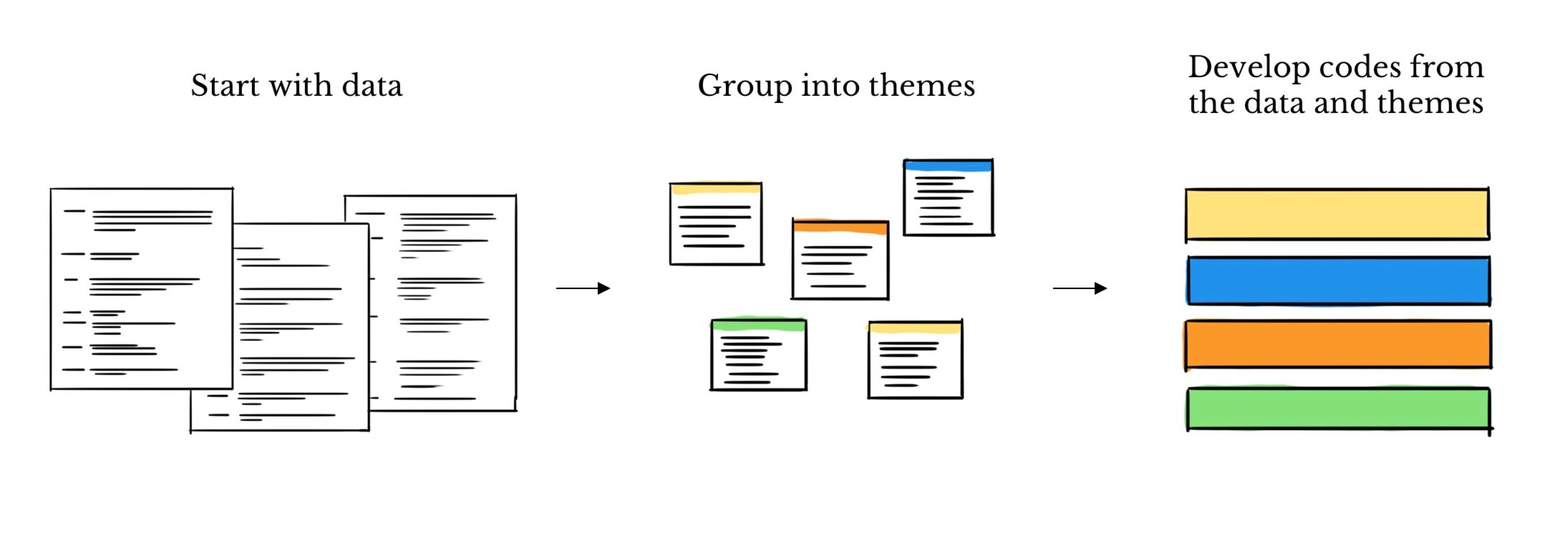
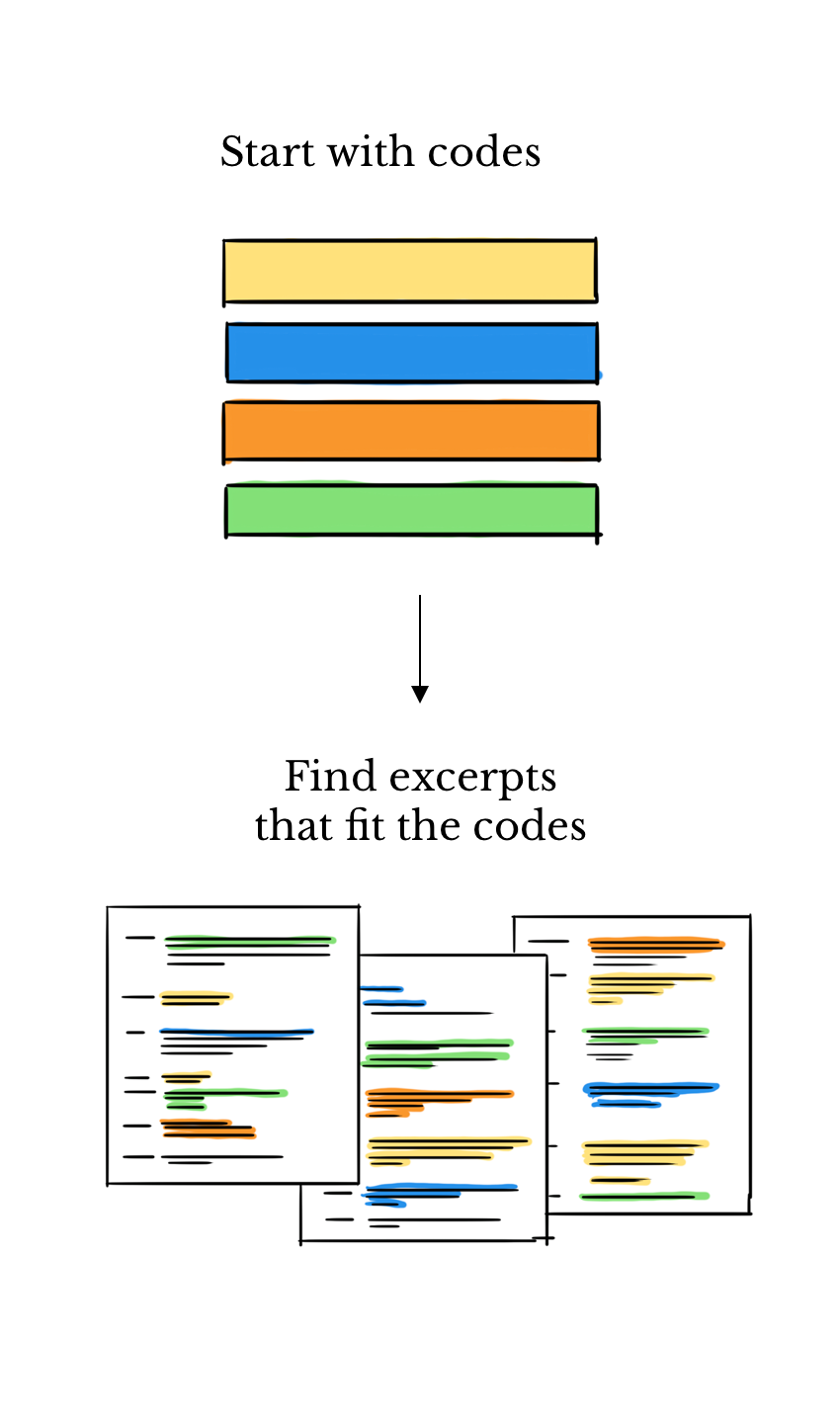


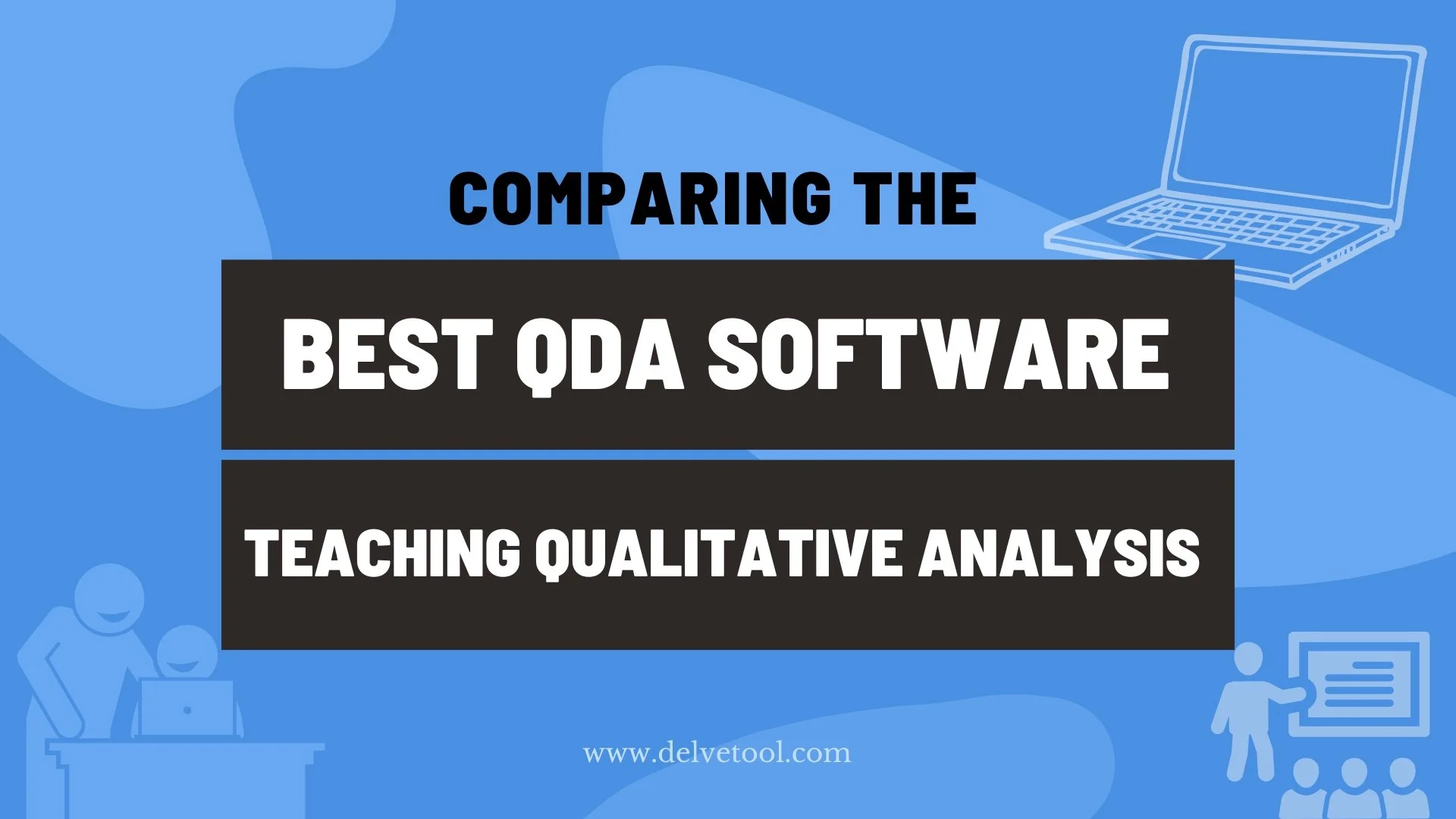
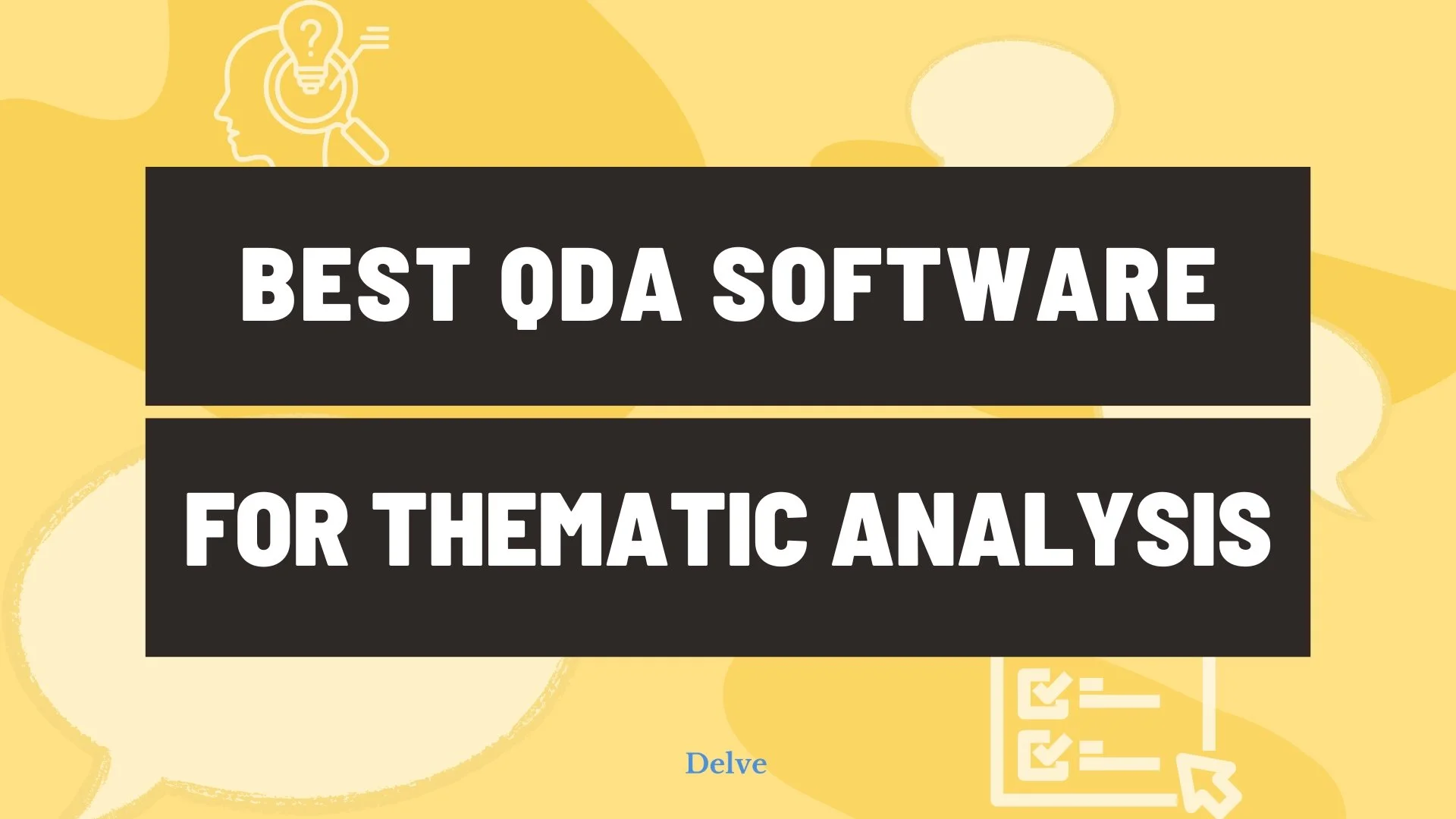




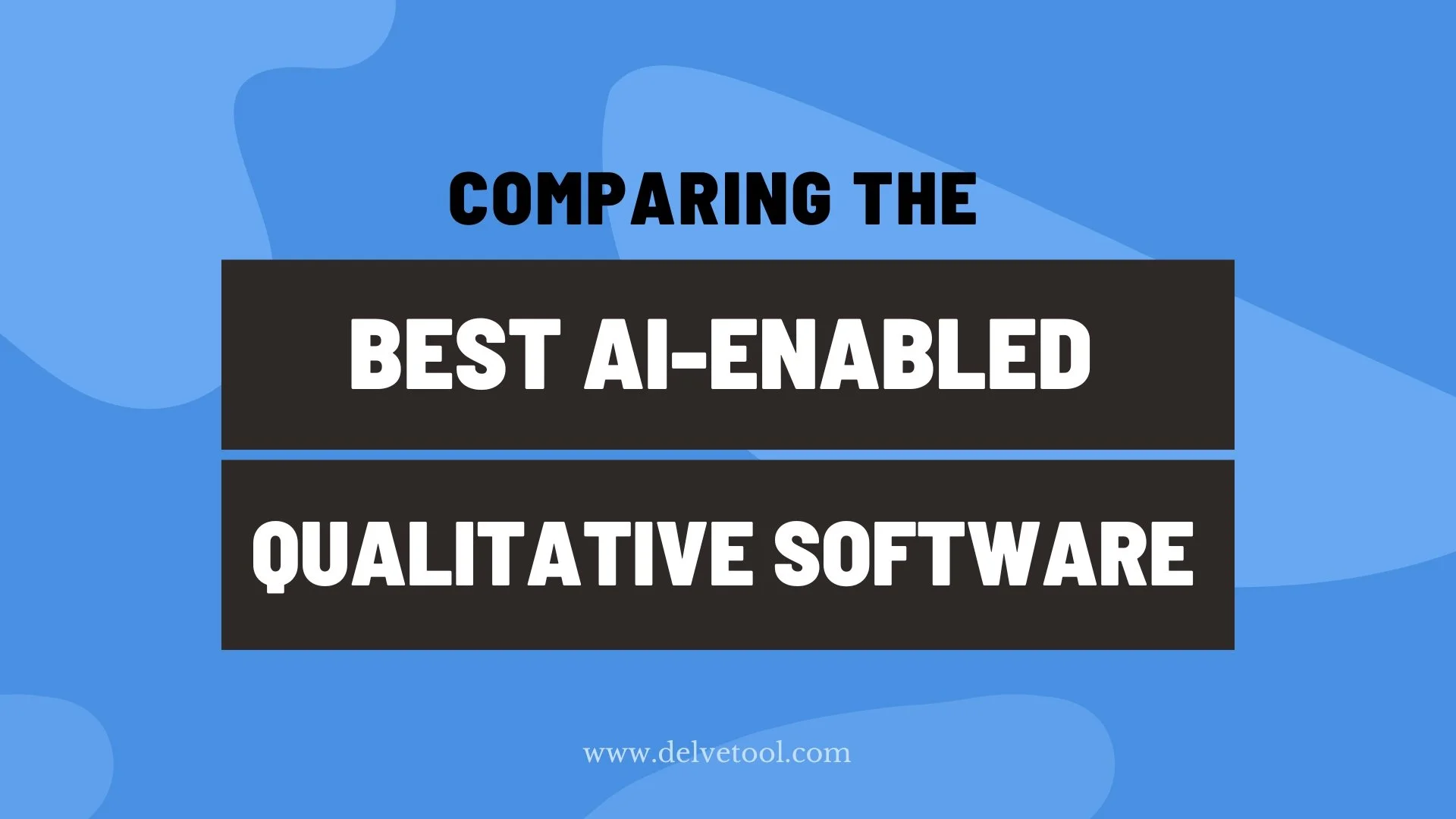
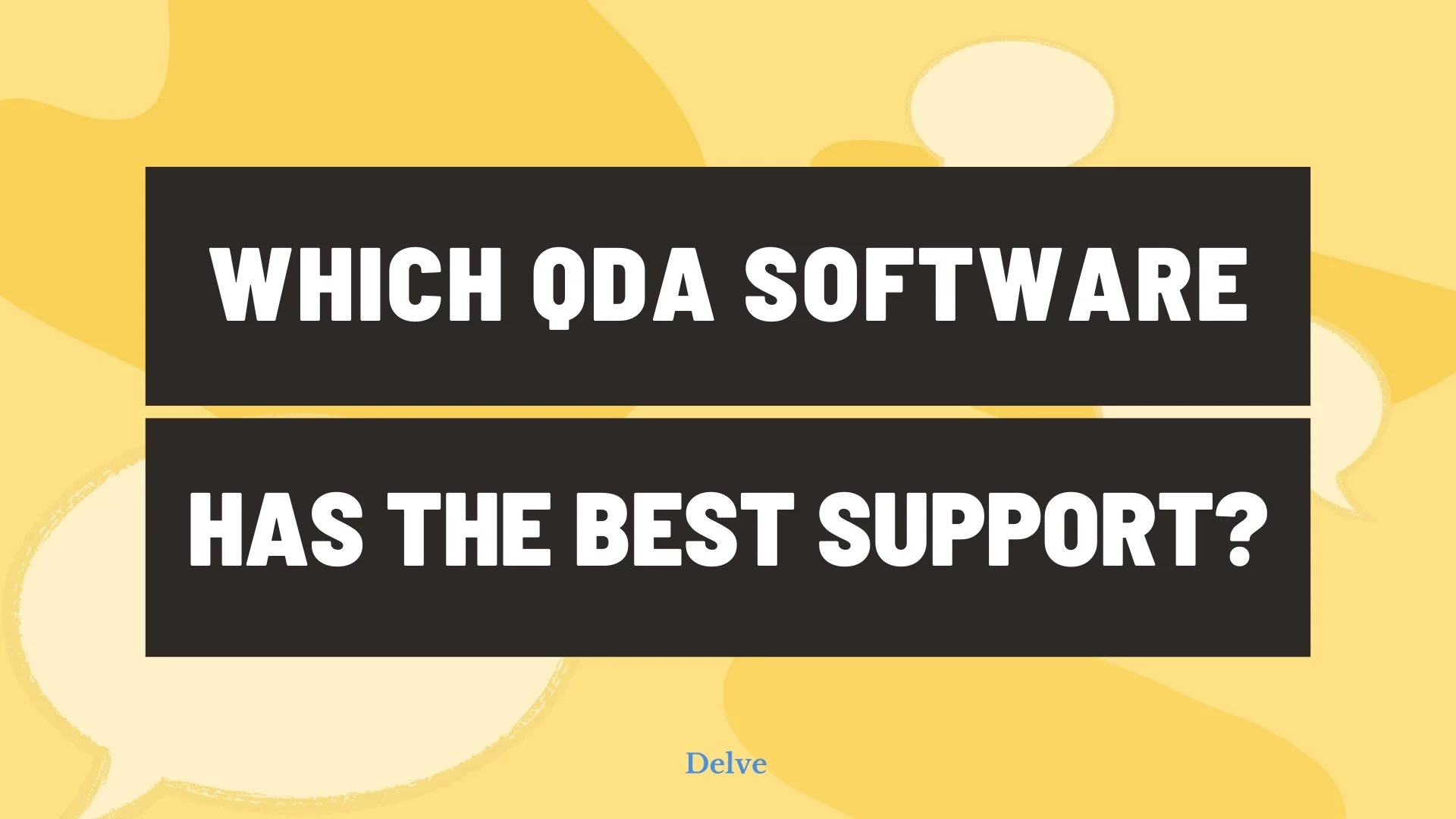
Thematic analysis involves reading through a data set and identifying patterns in meaning across the data.